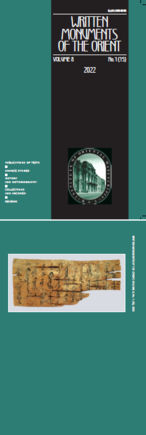|
|
| |

|

|
Yampolskaya N. Intermixture of Mongolian and Oirat in 17th Century Manuscripts // Written Monuments of the Orient. Vol. 8, No. 1(15), 2022. P. 75–87.
The Oirat alphabet Clear Script was created in 1648, but few specimens of Oirat penmanship from the 17th c. have survived, and very little is known about the early history of its development and adaptation. Some information on the subject can be gathered from manuscripts that were discovered at the site of the ruined Dzungar monastery Ablaikit. Among these manuscripts are multiple fragments of the Buddhist canonical collection Kanjur and two folios from ritual texts composed by the Fourth Panchen Lama. These texts are written in Mongolian, but the scribes used graphemes from Clear Script, elements of the vocabulary and grammar of Written Oirat. Fragments of another manuscript found in Ablaikit, a small birch-bark copy of the Heart Sutra, contain a text written in Oirat with interpolations from Mongolian. Combined, the observations based on the study of these sources show that the transition from Mongolian to Clear Script was gradual, and for a period of time in the second half of the seventeenth century both writing systems were used by the Oirats.
To WMO, vol. 8, No. 1(15), 2022... PDF-files PDF-files
Full text
Keywords
Ablaikit
Clear Script
Kanjur
Mongolian manuscripts
Oirat manuscripts
Zaya paṇḍita
|
|
|
|
|

